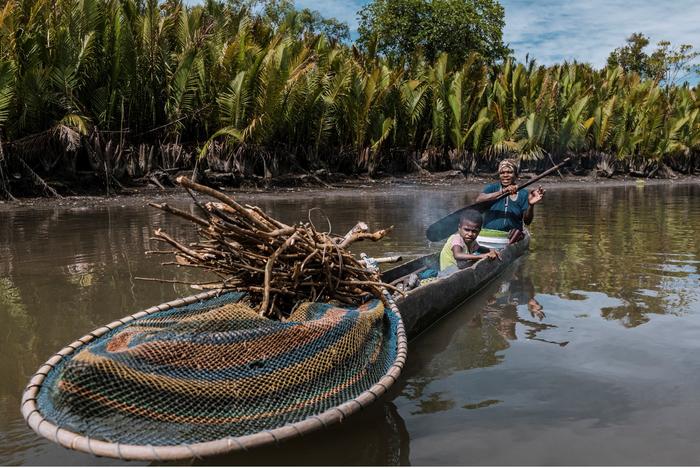AMHERST, Mass. – The global demand for palm oil—the most widely consumed vegetable oil on the planet, in everything from instant noodles to lipstick—is driving worldwide tropical deforestation. While many studies have shown the loss of biodiversity when rainforests are converted to oil palm plantations, researchers at the University of Massachusetts of Amherst are the first to show far-reaching and wide-ranging disturbances to the watersheds in which such plantations occur. Because many Indigenous peoples rely on water downstream from the plantations for their daily needs, the marked decrease in water quality has the potential to exacerbate public health issues in Indigenous communities. The study was published recently in Science of the Total Environment.

Credit: WRI Indonesia
AMHERST, Mass. – The global demand for palm oil—the most widely consumed vegetable oil on the planet, in everything from instant noodles to lipstick—is driving worldwide tropical deforestation. While many studies have shown the loss of biodiversity when rainforests are converted to oil palm plantations, researchers at the University of Massachusetts of Amherst are the first to show far-reaching and wide-ranging disturbances to the watersheds in which such plantations occur. Because many Indigenous peoples rely on water downstream from the plantations for their daily needs, the marked decrease in water quality has the potential to exacerbate public health issues in Indigenous communities. The study was published recently in Science of the Total Environment.
To conduct their research, lead author Briantama Asmara, who completed this work as part of his graduate studies at UMass Amherst, and senior author Timothy Randhir, professor of environmental conservation at UMass Amherst, focused on the Kais River watershed of West Papua, the western half of New Guinea’s island, an area of more than 1,000 square miles. Approximately one-quarter of the watershed has been turned into oil palm plantations. The watershed is also one of the oldest continually inhabited homes for different groups of Indigenous Papuans.
“The Kais River watershed, like many of the places where oil palm plantations are situated, is very remote and not particularly well studied,” says Randhir.
Asmara adds that, “though the palm oil companies have lots of data about what pesticides they’re using, the timing of their irrigation efforts, issues with runoff, etc., that information isn’t making it out to the downstream communities. I conducted this research because I wanted to get better, publicly available data to the people whose lives are being most affected.”
Asmara and Randhir relied on a powerful improved version of a watershed model known as the Soil and Water Assessment Tool (SWAT+) that assesses how a region’s hydrology responds to different land-use scenarios. They then fed the model data on the Kais watershed’s land cover, soils, elevations, stream networks and climate data. The team modeled three different scenarios: the historical baseline, using land-cover data from 2010–15; an altered scenario, representing the contemporary landscape with its large oil-palm plantations as of 2015–21; and a future scenario, forecast from 2024 out to 2034, that assumed a steady rate of plantation expansion and which also included the next 10 years’ worth of changing climate data.
Their findings show that the transition from tropical rainforest to contemporary oil-palm plantation has increased precipitation, runoff and soil moisture. Water quality has gotten dramatically worse since the plantations began: sedimentation has increased by 16.9%, nitrogen by 78.1% and phosphorous by 144%.
Though the worst effects on water quality will moderate somewhat according to the team’s future scenarios—the total tonnage of phosphorous carried by the watershed will decrease from 2,418 tons to 2,233.7—the water quality will remain far worse, and there will be more runoff than before the rain forest was converted to oil-palm plantation.
“The downstream Indigenous people who rely on the rivers and the streams in the watershed are highly vulnerable,” says Randhir. “They are bearing all the environmental and public health costs, while the international palm oil companies are reaping the rewards.”
“And yet,” says Asmara, “our research can help. Now that we know what the oil-palm plantations are doing to the watershed, both the industry and local governments can take action.” Asmara and Randhir suggest that regulators work to limit the use of pesticides, especially during periods of flooding, conduct continuous water quality monitoring, maintain riparian buffers and, most importantly, ensure that downstream communities have access to up-to-date water quality information.
Contacts: Timothy Randhir, randhir@umass.edu
Daegan Miller, drmiller@umass.edu
Journal
Science of The Total Environment
Article Title
Modeling the impacts of oil palm plantations on water quantity and quality in the Kais River Watershed of Indonesia



